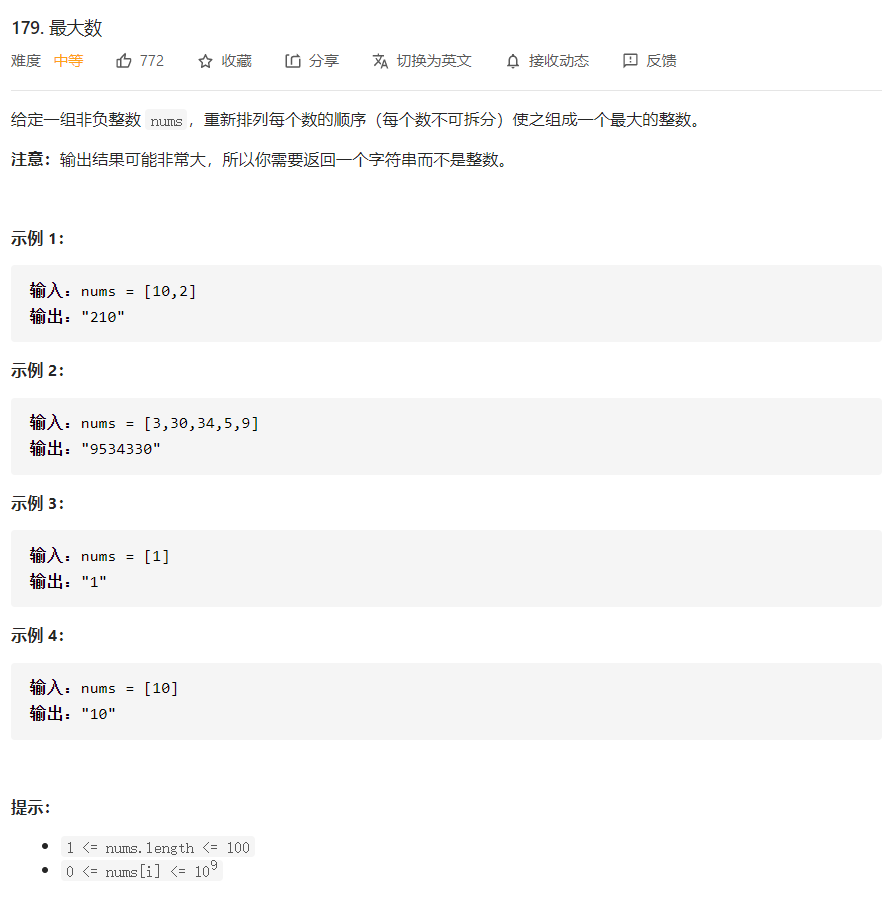
题目分析
本题很有趣,如果想得到很简单,如果想不到就会很难,提示小伙伴们能否从两个数开始思考呢?
排序
看第一个例子[10, 2]会组成210,在本题中,因为字符串”210”大于“102”,所以将“2”放在前面,我们自定义排序方式,在Java中使用字符串的CompareTo方法,可以比较”ab”和”ba”的大小。
如果排序的对象间能够满足传递性的规律,则排序方式一定是正确的。什么是传递性呢?如果$ab \le ba$,$bc \le cb$,能够推导出来$ac \le ca$则说明自定义的排序方式是正确的。
$$a x pow(10, len(b)) + b \le b x pow(10, len(a)) + a$$ 可得
$$a x (pow(10, len(b) - 1) \le b x (pow(10, len(a) - 1)$$
$$b x pow(10, len(c)) + c \le c x pow(10, len(b)) + b$$ 可得
$$b x (pow(10, len(c) - 1) \le c x (pow(10, len(b) - 1)$$
两边相乘可得
$$a x b x (pow(10, len(b) - 1) x pow(10, len(c) - 1) \le b x c x pow(10, len(a) - 1) x pow(10, len(b) - 1)$$
当$b = 0$时,必然满足条件
当$b \ne 0$时,两边同时除以$b x pow(10, len(b) - 1)$,可得
$$a x pow(10, len(c) - 1) \le c x pow(len(a) - 1)$$,化简可得
$$a x pow(10, len(c)) + c \le c x pow(10, len(a)) + a$$ 即
$$ac \le ca$$
算法的时间复杂度为$O(nlog(n))$,空间复杂度为$O(n)$
下面是Java语言的题解
1 | class Solution { |
因为本题数据以int形式给出,要先转换为字符串,然后对字符串进行排序,最后再通过StringBuilder的append方法将字符串组合起来,因此代码量非常的长。我们可以采用Java流的特点进行编写代码,有关流的特性,后面有时间我会出一期博客给大家进行讲解,这里先给出代码吧。
1 | class Solution { |
刷题总结
本题难度不大,但是方法难以想到,希望小伙伴们多多刷题,这样可以开阔视野,遇到一些奇怪的题目也能够很快想出方法。